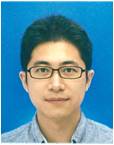
Date: Wed Jun 27, 2018
Time: 8:00 AM - 9:30 AM
Moderator: Bernie Zebarth
Non-transpiration water loss is often neglected when evaluating water use efficiency (WUE) of precision irrigation system, due to the difficulties in determining water loss from the root zone. The objective of this study is to investigate the feasibility of a new water saving approach by controlling soil water retention around root zone during the plant growth. We grew two tomato cultivars (Anemo, Japanese variety) in an environmental controlled growth chamber, with previously oven dried and sieved red soil as substrate for cultivation. In order to investigate the water productivity at a minimal irrigation level for the tomato growth. The procedure involved supply a meager amount of water (10ml) from a point water source to the plant root zone when the plant started to wilt. The water supply was repeated several times (4-7 times) a day. We confirmed plant growth from seedling to the first fruit maturing under this extreme condition. There were no evaporation and deep percolation losses due to the boundary separated the wet and dry soil was visually observed. Plant increased biomass in response to the water applied in the water retention zone. The fruits weight, dry shoot and root biomass were used to analyze the WUE. As a result, the total water supply was 1/10 less than conventional irrigation while WUE was about 1/4 lower. The approach developed in this study aims to be used to develop new standard for comparison of the water saving degree of precision irrigation system.

_natural.jpg)
This study evaluated a comprehensive plant water stress index that integrates the canopy temperature and the environmental conditions that can assist in irrigation management. This index—Comprehensive Stress Index (CSI)—is based on the reformulation of the leaf energy balance equation. Specifically, CSI is the ratio of the temperature difference between a dry leaf (i.e. a leaf with a broken stem) and a live leaf (on the same tree) [i.e. Tdry-Tleaf] and the difference between the vapor pressure inside the stomatal cavity at saturation and the vapor pressure of the air at ambient temperature [i.e. es(TL)-e(TA)]. The required measurements to compute CSI include dry leaf temperature, live leaf temperature, relative humidity, and air temperature at the tree being monitored. In this study, all measurements were obtained using a single sensor suite per tree connected to a wireless mesh network. The sensor suite included two thermal infrared sensors, one for the dry leaf and one for the live leaf, both of which were housed in the same unit with approximately the same environmental conditions. The CSI is a dynamic index with a value for every data sample collected. For a single index representing each day, the CSI was manipulated in two ways. First, the CSI was integrated with respect to time from 10 AM to 6 PM to obtain the Integrated Comprehensive Stress Index (ICSI). Second, the CSI was averaged from 1 PM to 3 PM to obtain the Average Comprehensive Stress Index (ACSI). Both ICSI and ACSI were compared to other stress indices, including CWSI and IDANS. Results indicate that ICSI and ACSI are satisfactorily correlated with midday stem water potential (SWP). The ICSI and ACSI indices may be more convenient than other stress indices because they require measurements only at the tree being monitored.
This paper will present a dynamic Variable Rate Irrigation System developed by the University of Georgia. The system consists of the EZZone management zone delineation tool, the UGA Smart Sensor Array (UGA SSA) and an irrigation scheduling decision support tool. An experiment was conducted in 2015, 2016 and 2017 in two different peanut fields to evaluate the performance of using the UGA SSA to dynamically schedule Variable Rate Irrigation (VRI). For comparison reasons strips were designed within the fields. These strips were irrigated according to either UGA SSA or IrrigatorPro recommendations. The results showed that IrrigatorPro is very conservative irrigation method. On the other hand the UGA SSA recommendations worked very well with the VRI system and in all three years it suggested 45% less water (average) than the IrrigatorPro.

Agriculture under arid environment is always become a challenge due to water scarcity and salinity problems. With average rainfall of 100 mm, agriculture in Oman is limited due to the arid climate and limited arable lands. More than 50 percent of the arable lands are located in the 300 km northern coastal belt of Al-Batinah region. In addition, country is facing severe problem of sea water intrusion into the groundwater aquifers due to undisciplined excessive groundwater (GW) abstraction for irrigation. Although farmers are allowed to use ground water with a quota system developed by the Ministry of Agriculture, groundwater over pumping has caused seawater intrusion and salinity issues in most arable lands. The main objective of this research is to find alternative options for minimizing the groundwater irrigation by developing a Decision Support System (DSS). The DSS could be used to optimize the precision management of conjunctive use of treated wastewater (TW) for irrigation. Oman follows guidelines available for the use of treated wastewater with two classes A and B both with tertiary treatments as per international standards. Class-A can be recommended for vegetables consumed raw while Class-B for after cooking. Current TW production in Muscat governorate along is over100,000 m3/day and it is predicted to be four fold by 2025. Currently this volume is underutilized and some have to be dumped in sea.
The developed DSS comprised of subsystems for data management, a model management, knowledge management and the user interface for easy use and interpretation of results. The date management was done under Excel domain, and the model management was through macro programming, linear programming (LP) optimization models including transportation algorithms all in Excel domain. A user interface was optional through either with excel or using Visual Basic. The results were based on two extreme scenarios; zero TW dumped and zero GW used for irrigation. The DSS could predict water balance for number of crop rotations and based on adjustable cost variables, farmer profit margins could be created. Using LP optimization, crop selections and rotation could be done while transportation algorithm could organized and predict best locations and capacities for treatment plants and the wastewater collection and transportation to farming areas via treatment plants. This type of DSS would be useful as a water management optimization and planning tool for managers and planners.
In precision agriculture, monitoring of soil moisture plays an essential role in correct decision making. In practice, regular mesh installation, or large random deployment of moisture sensors over a large field is not possible due to cost and maintenance prohibitions. Consequently, direct measurement of moisture is possible at only a few points in the field. A value for the moisture may then be estimated for the remaining areas using a variety of algorithms.
It is shown that although soil moisture varies spatially, the values are typically spatially correlated. Consequently, they have a sparse representation in the frequency domain. For such signals, compressive sensing (CS) has proven to be an effective tool in estimating the missing variable values, from sensed values.
CS theory is based on a l0-norm optimization problem which is non-deterministic polynomial-time (NP) hard problem and requires an exhaustive search over all possible locations of the nonzero entries in the corresponding sparse signal. For most real-life applications, this optimization translates into a very large-scale problem which takes substantial time and computing resources to solve. This is usually circumvented by instead using an approximation of the l0-norm.
The l0-norm presents two challenges when incorporated into an optimization problem. It is both non-smooth and non-linear. Smooth approximations of the zero norm exist in various linear and non-linear forms. The nature of each approximation makes it more apt for a different type of application (with respect to size of the problem, nonconvexity of the original problem, and the requisite computational speed). In this paper, some different approximations of the zero norm are compared to determine which type is more suited to soil moisture application problems.
The data set that is used for numerical experiments is described. It is extracted from the simulation of a simple field using the state-of-the-art TIN-based Real-time Integrate Basin Simulator (tRIBS). The problem is then solved for different approximations of l0-norm and a detailed comparative study is presented.
Considering the importance and scarcity of water resources, the efficient management of water resources is of great imp,ortance. Adoption of modern irrigation technology is considered to be a key of increasing the efficiency of water used in agriculture. Policy makers have implemented several ways to induce the adoption of new irrigation technology. The empirical studies show that farmers are reluctant to utilize the use of new irrigation methods. This study aims to assess factors affecting on farmer’s decision on application of water saving technologies with emphasize on crop price variation and water sources. A Logit model was employed to examine the impact of different variables on use of water saving technology. The required data gathered from a sample of 204 farmers in year 2012. The results indicate that different variables such as crop price variability, water supply source, high value crops, farm size, income, education, membership in cooperatives have positive effect and variables such as age and number of plots have negative impact on the probability of adopting modern water saving technologies.
